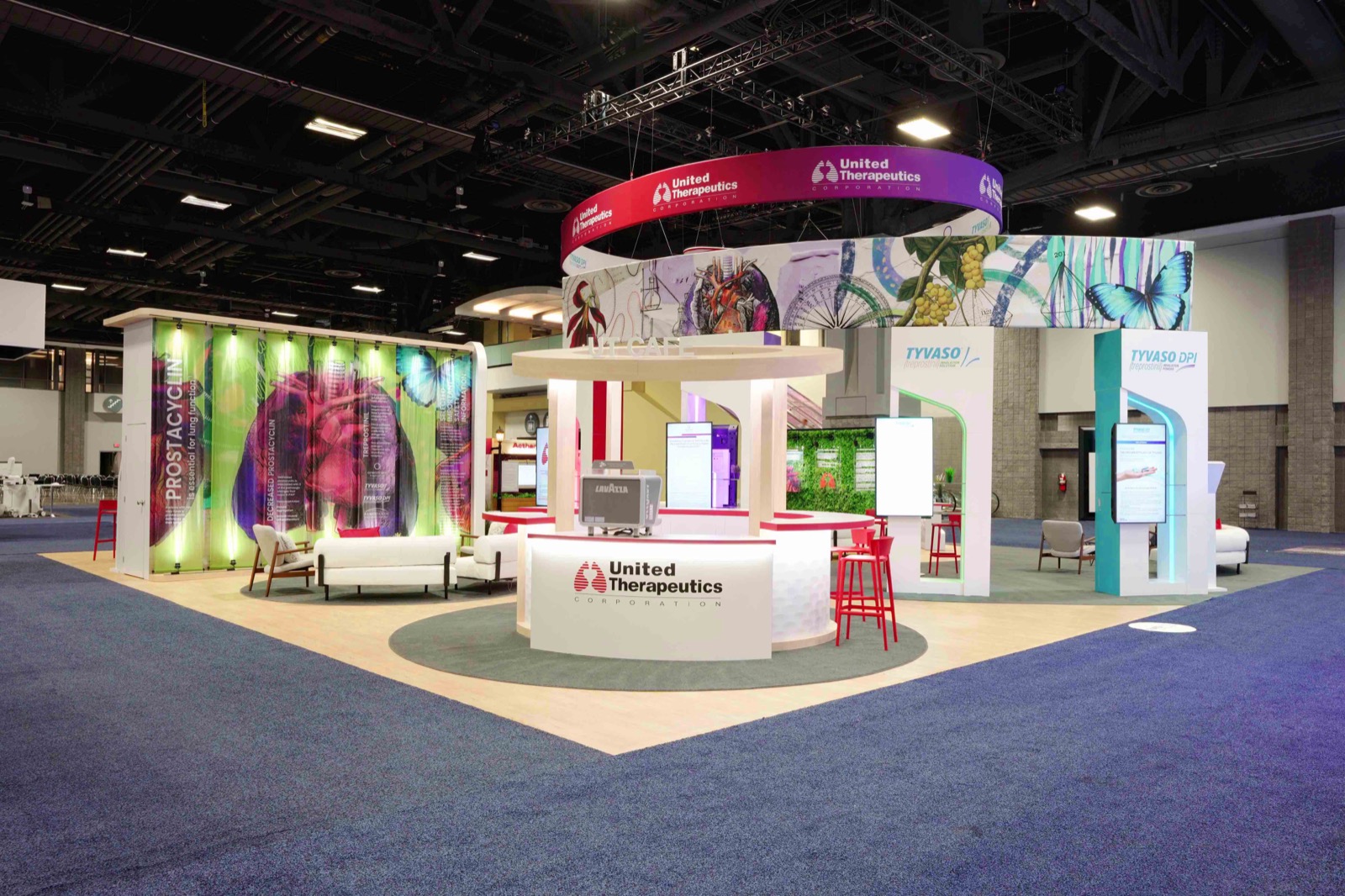How do you know if your trade show exhibit was a success? Trade shows are major investments where brands showcase products, build relationships, and create memorable experiences. But are you measuring what truly matters? While many companies focus solely on lead generation to measure success, the true impact of your exhibition efforts extends far beyond that single metric.
The best way to determine which shows to attend, how to adjust your exhibit design, and other critical questions starts with establishing clear Key Performance Indicators (KPIs). Well-defined KPIs provide:
- Guidelines for your creative team and onsite staff
- Framework for post-show performance analysis
- Metrics that matter to leadership Data to demonstrate event marketing’s value to your bottom line
- Every company has unique business goals, which makes it essential to identify the right success metrics for your specific situation.
Here are a few to consider:
1. Lead quality (not quantity)
Lead generation is often the primary metric used to evaluate trade show success, but it’s essential to measure the quality of those leads as much as the quantity. To assess lead quality, track factors like lead engagement level, qualification score, and the probability of conversion. What makes a lead valuable? Consider their purchasing intent, decision-making authority, and timing. Quality over quantity will better showcase your event’s impact and provide sales and marketing with a warmer audience to convert in the weeks and months after a show.
2. Booth traffic and interaction time
It’s not enough to know how many people visited your booth; it’s also important to track how long they stayed and what engaged them. Were people interacting with staff, trying demos, or participating in experiences? Metrics like visitor count and average interaction time can help you understand if your booth and its activities are engaging enough to capture and hold attendee attention. Technology innovations allow brands to use sensors, heatmapping and other tools to track this information in real-time and use it to inform future design decisions with an objective perspective on what spoke to the audience.
3. Engagement levels during product demonstrations
Product demos are where the magic happens—whether it’s a physical demo or a virtual walkthrough. Getting prospective customers excited about your offerings and addressing concerns or objections in a low-stress environment can accelerate sales. Consider tracking participation rates, the number of questions asked, and the time spent during demos. These metrics help determine if your demo is compelling, relevant, and persuasive to your target audience.
4. Brand awareness and sentiment analysis
Brand perception may seem intangible, but it can be measured systematically. While many companies rely on gut feelings about their brand impact, modern tools offer concrete ways to track awareness and sentiment. Metrics like social media mentions, hashtag engagement and AI-powered conversation analysis can reveal how your message resonates with attendees. By monitoring both in-booth conversations and post-show discussions, you can quantify your brand’s presence and reception. Advanced analytics tools can even map real-time sentiment patterns around your booth, providing actionable insights into audience engagement.
5. Post-event follow-up success
Metrics like post-event response rates and follow-up engagement are key to understanding how effective your exhibit was. Whether through email open rates, meeting bookings, or demo requests, the post-show follow-up rate is essential for judging both short-term and long-term impact. Not only can this help showcase how effective your sales team is in the follow up phase, but segmenting those leads that perform well can help you better target marketing and sales activities around trade shows.
6. Sales pipeline acceleration
A critical metric that’s often overlooked is how trade show interactions accelerate opportunities within the sales pipeline. Trade shows offer you the chance to not just engage a prospect, but to speed up the sales cycle with tailored interaction. Take note of which stage leads were in before and after the show. Trade shows can be instrumental in accelerating warm leads towards a closed sale, and this can be quantified in both timing and cost-efficiency metrics.
7. ROI calculation (beyond immediate sales)
While Return on Investment (ROI) is an obvious metric, it’s critical to look beyond the immediate numbers. ROI can be measured over time, particularly if the trade show presence helped reinforce your brand, foster partnerships, or generate long-term sales opportunities. Look at cost per lead, total pipeline generated, and sales generated over the course of a year to better understand how your total investment in a trade show – or slate of shows – bolstered your business and captured returns.
8. Partnerships and media attention
Industry exposure is a major payoff for attending trade shows. Brands that put forward speakers, sponsor talks, and have a booth footprint on the floor are often just as interested in making a splash in the industry as they are in closing business. Trade associations, journalists, futurists, analysts and others who shape the conversations around industries are often in attendance, both looking for specific stories and breakthroughs as well as just understanding who the interesting players are in a given industry. Consider whether these areas have value and decide whether you should have KPIs around media contacts, specific story placements or PR opportunities, industry association connections, or analyst follow up after a show. Working closely with your PR and marketing team can help align these KPIs with broader business goals and add another layer of impact to your trade show attendance ROI.
Trade shows are more than just lead-generating events—they are a comprehensive opportunity to build brand presence, engage customers, and accelerate sales. By expanding your metrics beyond simple lead counts, you can gain valuable insights into your true event success and consistently improve your trade show ROI. Interested in exploring other ways strategy can help you develop a stronger trade show playbook?





